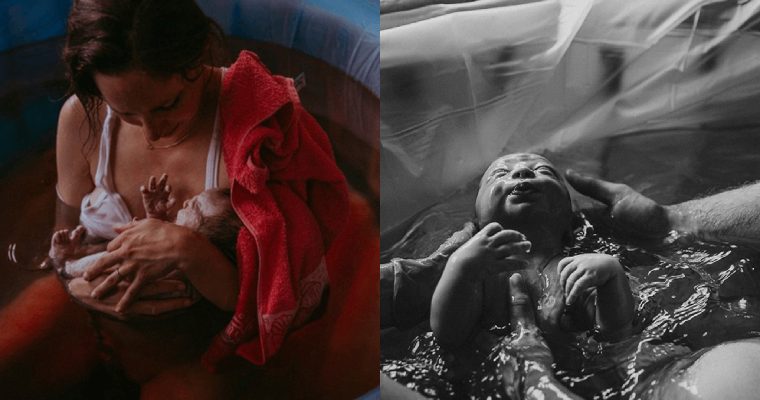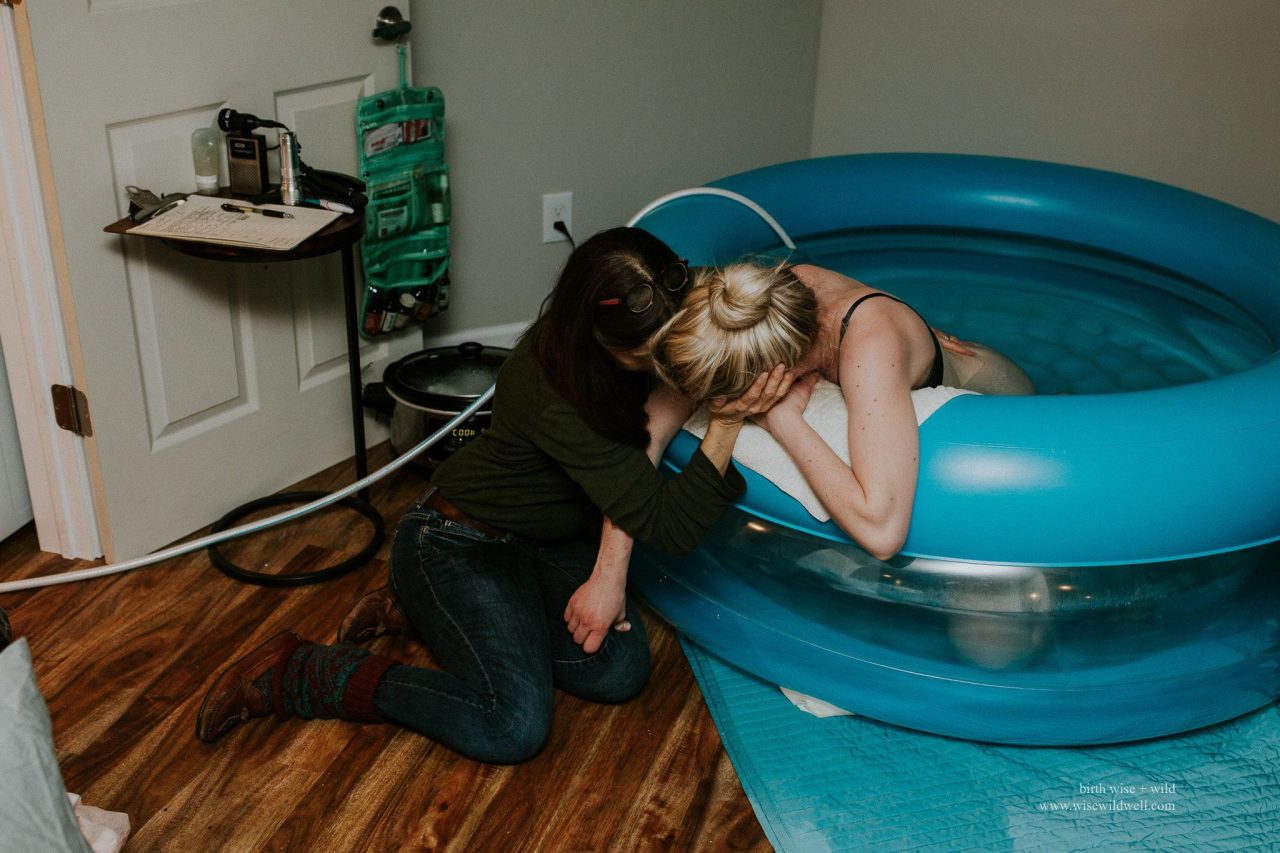Second labors tend to be shorter than firsts but as with everything birth, it’s unpredictable. This Mama had some prodromal labor and was 3 cm for 3 weeks before they scheduled induction at almost 41 weeks!
They checked in to the hospital at 8 am and started Pitocin at 9:20 am. The doctor broke her water and casually mentioned that the baby would be out in time for a “late lunch”. My bags were packed and had been for weeks, so I just waited for the go-ahead to head out. Not even 2 hours later, she tells me the contractions are about 2-3 apart and that she had ordered an epidural.
Photo credits: Lisa LeBaron Photography and Film
I had no idea how dilated she was but I ran out the door. I arrived at the hospital at 11:34 am and it was very clear she was hitting transition. The nurse suggested they get into position for the epidural but the labor ward was super busy so the anesthesiologist wouldn’t arrive for 20 more minutes.
Photo credits: Lisa LeBaron Photography and Film
The anesthesiologist arrives and starts trying to place the epidural but things start to escalate very quickly. At 12:13 pm, the whole room realizes that this epidural isn’t going to happen because this sweet girl was coming. Fast. The nurse calls for a midwife because the OB wouldn’t make it in time and sweet Pilar was born within a minute. Here is what this Mama has to say about her birth:
Photo credits: Lisa LeBaron Photography and Film
“As the contractions intensified, my assurance that the sweet relief of an epidural was imminent quickly dissipated. The nurse and the anesthesiologist kept instructing me to “relax, hold still, stay put” all while my body was submerged in wave after wave of pain that I didn’t anticipate.
Photo credits: Lisa LeBaron Photography and Film
It’s kind of nuts to say that but I didn’t have the mental model and context of spontaneous labor and “natural” contractions as my first daughter’s arrival were also induced and that epidural kicked in before things got too intense. Here I was, headed into the valley of darkness and my only thoughts were, “this is not part of the plan!” I remember saying, “I can’t do this, I can’t do this!” over and over.
Photo credits: Lisa LeBaron Photography and Film
Then suddenly, it felt like the baby was coming out and I’d be sitting on her! I recall screaming, “Something’s coming out!” I was terrified. I didn’t know what was going to happen. I just felt as if I was going to be torn apart.
Photo credits: Lisa LeBaron Photography and Film
And this is the stunned face of a woman realizing that she has done what she never imagined she could do. I had a baby without an epidural – I’m still wrapping my head around this. Immediately after Pilar came out, all the pain was gone and I just felt joy, relief, and love. I would have never thought that I was capable of this, and I’ve already had one child! I’m so thankful that Lisa was there to capture this amazing journey. I will treasure the revelation forever.”
Photo credits: Lisa LeBaron Photography and Film
Photo credits: Lisa LeBaron Photography and Film
Photo credits: Lisa LeBaron Photography and Film
Photo credits: Lisa LeBaron Photography and Film
Photo credits: Lisa LeBaron Photography and Film
Breaking your waters: Breaking the membrane that contains the fluid around your baby (your waters) is often enough to make contractions stronger and more regular. This is also known as artificial rupture of the membranes (ARM).
Your midwife or doctor can do this by making a small break in the membrane during a vaginal examination. This may make your contractions feel stronger and more painful, so your midwife will talk to you about pain relief.
Cervical dilation: Your cervix needs to open about 10cm for your baby to pass through it. This is what’s called being fully dilated.
In a 1st labor, the time from the start of established labor to being fully dilated is usually 8 to 12 hours. It’s often quicker (around 5 hours), in a 2nd or 3rd pregnancy.
When you reach the end of the 1st stage of labor, you may feel the urge to push.








